The Captivating Subterranean Wonder of the Basilica Cistern
Beneath the bustling streets of Istanbul lies a remarkable feat of ancient engineering – the Basilica Cistern. This massive underground water storage facility, dating back to the 6th century, is a testament to the ingenuity and architectural prowess of the Byzantine Empire. But what truly captivates visitors are the two enigmatic Medusa heads that adorn the cistern’s interior, one placed upside down and the other sideways.
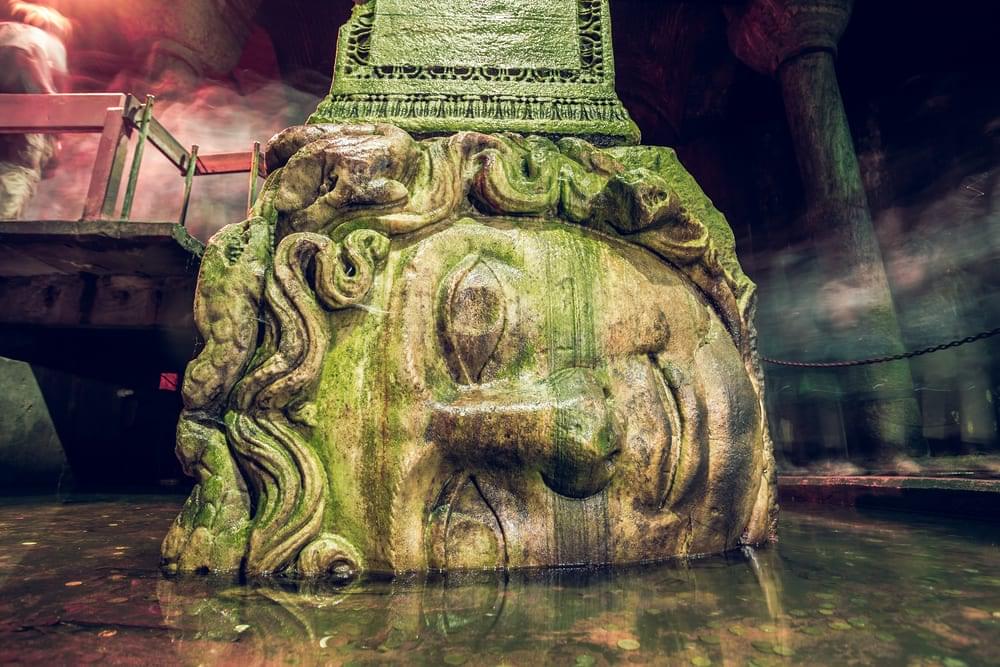
The Basilica Cistern, also known as the Yerebatan Sarayı or “Sunken Palace,” is a breathtaking sight to behold. Descending the 52 steps that lead down to the cavernous chamber, visitors are immediately struck by the grandeur of the space. Supported by 336 marble columns, each standing 9 meters tall, the cistern has the capacity to hold up to 100,000 tons of water. The columns, arranged in symmetrical rows, create a mesmerizing visual effect, reflecting the intricate engineering and design that went into its construction.
The Enigmatic Medusa Heads
But it is the two Medusa heads that truly captivate the imagination of those who visit the Basilica Cistern. Situated at the base of two columns, these ancient relics are believed to have been repurposed from Roman ruins and incorporated into the cistern’s design.
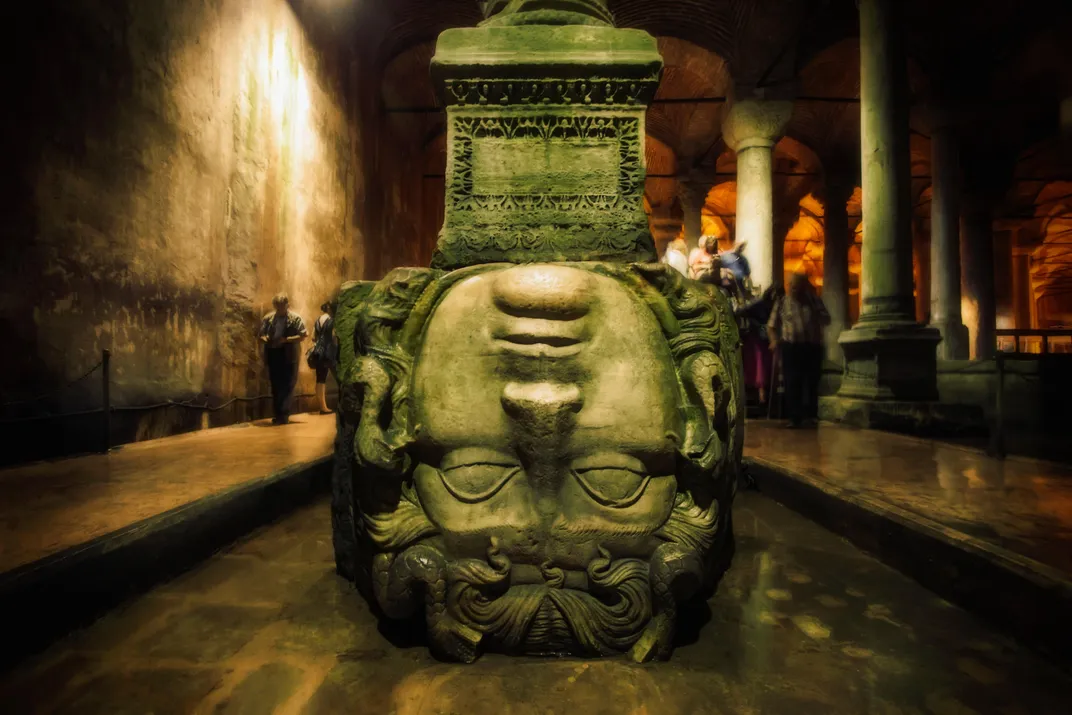
The origins of these Medusa heads are shrouded in mystery, but their placement within the cistern is equally intriguing. According to Greek mythology, the gaze of the Gorgon Medusa was said to turn anyone who looked upon her to stone. It is theorized that the inverted and sideways positioning of the heads was a deliberate attempt to neutralize the power of Medusa’s petrifying stare, perhaps to protect those who would be drawing water from the cistern.
The Rediscovery of the Basilica Cistern
For centuries, the Basilica Cistern remained largely forgotten, lost to the annals of history after the fall of Constantinople in 1453. It was not until 1545 that the French traveler Petrus Gyllius rediscovered the subterranean wonder, learning of its existence from locals who were drawing water through holes in their basements.
Gyllius was captivated by his findings and documented his exploration of the cistern in his work “De Bosporo Thracio.” His accounts described the grandeur of the space, the mysterious Medusa heads, and the intricate engineering that had allowed the cistern to function as a vital water source for the Byzantine capital for centuries.
The Basilica Cistern Today
Today, the Basilica Cistern is a popular tourist destination, drawing visitors from around the world who come to marvel at its impressive scale and the enigmatic Medusa heads. The site has been carefully restored and maintained, allowing visitors to fully immerse themselves in the history and wonder of this remarkable ancient structure.
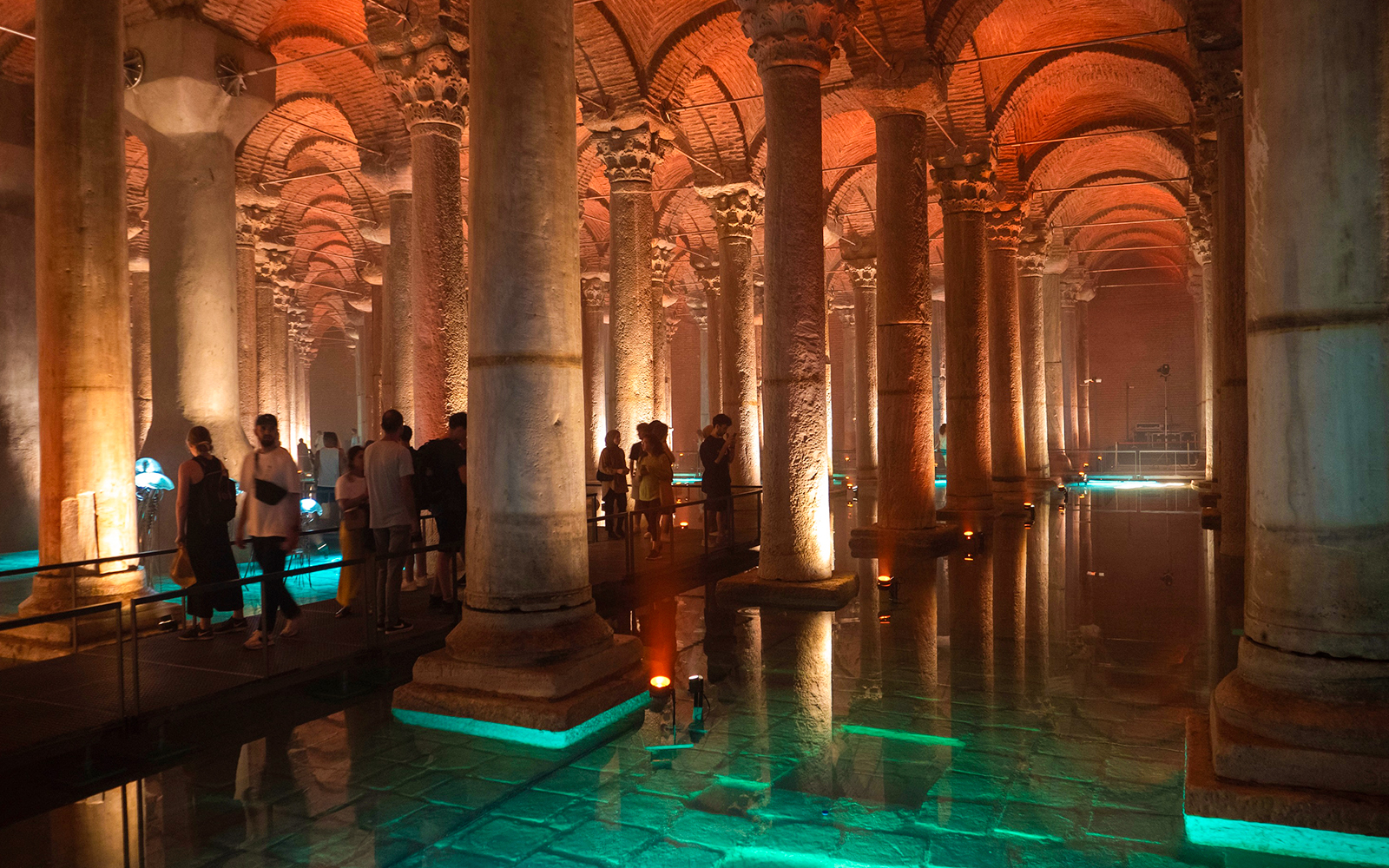
As you wander through the dimly lit, cavernous space, the Medusa heads come into view, their enigmatic gazes seemingly fixed upon the visitors who pause to admire them. The inverted and sideways positioning of the heads adds to the sense of mystery, inviting visitors to ponder the significance and symbolism behind their placement.
Theories and Speculation
The true origins and purpose of the Medusa heads within the Basilica Cistern remain a subject of ongoing debate and speculation among historians and archaeologists. Some believe that the heads were deliberately chosen for their mythological significance, as a way to harness the power of Medusa’s gaze to protect the water supply.
Others have suggested that the heads may have been repurposed from earlier Roman structures, their placement within the cistern serving a purely decorative or symbolic function. The fact that the heads are not perfectly symmetrical in their positioning has led some to believe that they were not originally intended for this location, but rather were adapted and incorporated into the cistern’s design.
Exploring the Basilica Cistern’s History and Significance
Beyond the captivating Medusa heads, the Basilica Cistern itself is a remarkable feat of engineering and a testament to the ingenuity of the Byzantine Empire. The sheer scale and complexity of the structure, with its 336 columns and vast water storage capacity, is a testament to the advanced construction techniques and hydraulic engineering of the time.
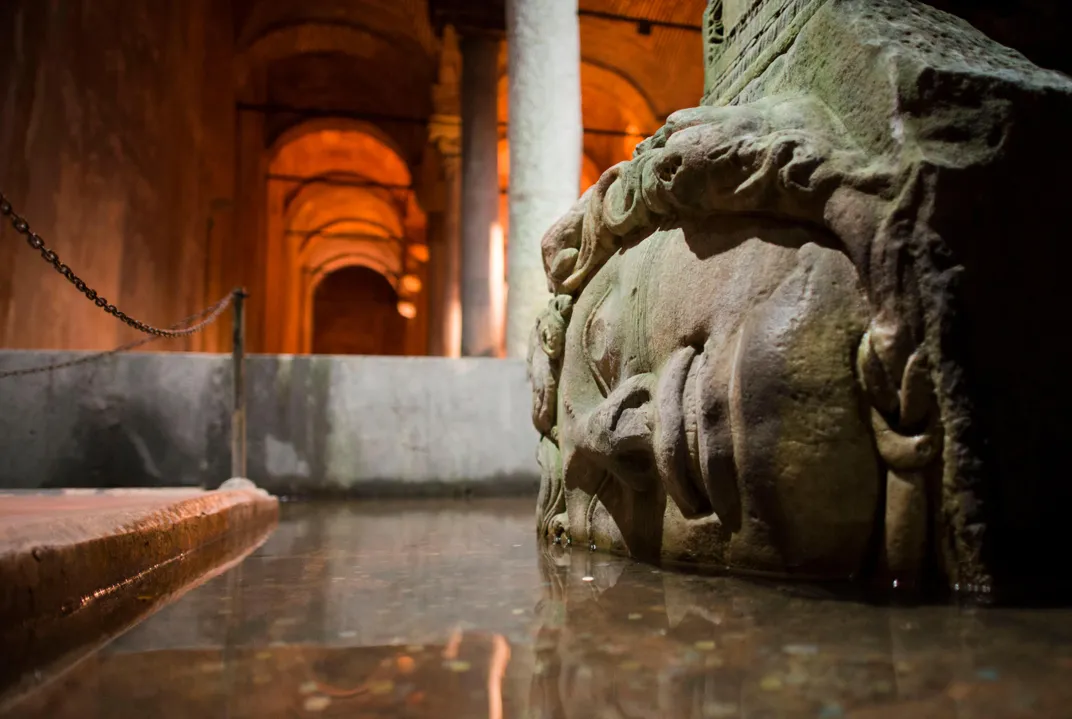
The cistern’s role as a vital water source for the Byzantine capital is also a fascinating aspect of its history. During periods of siege or conflict, the cistern would have provided a reliable and secure supply of water for the city’s residents, ensuring their survival and resilience in the face of adversity.
Preserving the Basilica Cistern’s Legacy
Today, the Basilica Cistern stands as a testament to the enduring legacy of the Byzantine Empire and the remarkable achievements of its architects and engineers. As a UNESCO World Heritage Site, the cistern is carefully preserved and maintained, ensuring that its unique history and architectural marvels can be appreciated by visitors for generations to come.
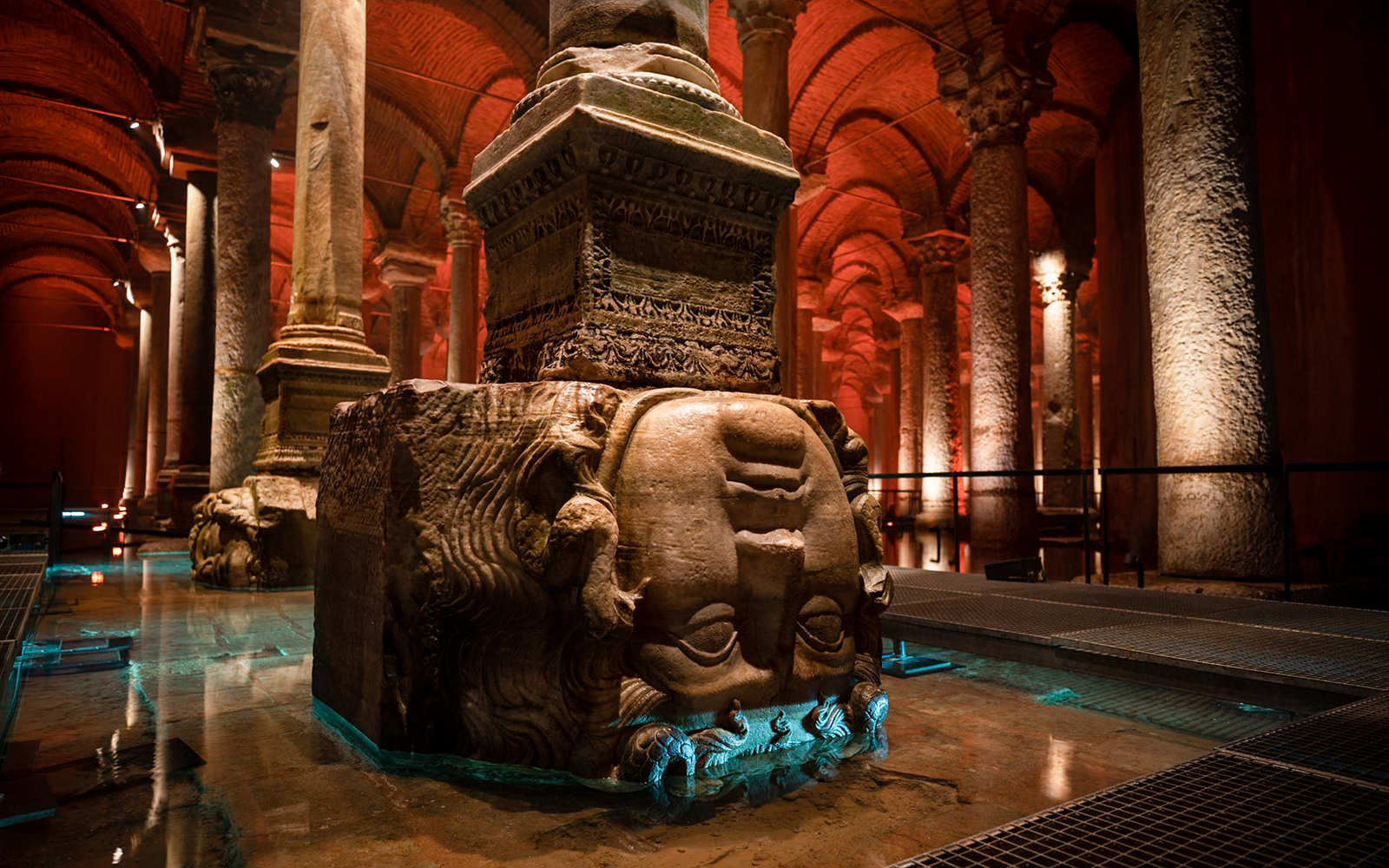
For those who venture into the depths of the Basilica Cistern, the experience is truly awe-inspiring. The sense of scale, the intricate details, and the enigmatic Medusa heads all combine to create a captivating and immersive experience that transports visitors back in time, to a world of ancient wonders and enduring mysteries.
Conclusion: Unlocking the Secrets of the Basilica Cistern
The Basilica Cistern in Istanbul is a captivating and enigmatic wonder of the ancient world. From its massive scale and impressive engineering to the mystery of the Medusa heads, this subterranean marvel continues to captivate and intrigue all who visit. As we explore the history and significance of this remarkable structure, we are reminded of the ingenuity and resilience of the Byzantine Empire, and the enduring power of ancient legends and mythologies to capture the human imagination.
Whether you’re a history buff, an architecture enthusiast, or simply someone in awe of the mysteries of the past, a visit to the Basilica Cistern is a must-do on any trip to Istanbul. So descend the 52 steps, and prepare to be transported to a world of wonder, where the past and present converge in a truly unforgettable experience.

